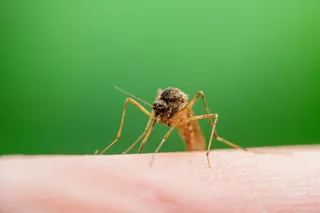The synthetic trachea, just before implantation
What's the News: An African man's new trachea is the world's first synthetic organ to be transplanted. Made from a polymer scaffold coated with the patient's own cells, the windpipe seems to be working out well, more than a month after the surgery. How the Heck:
The patient had an inoperable golfball-sized tumor, which hadn't responded well to chemo or radiation treatments, obscuring his windpipe. While patients in such straits often receive donor tracheae, none were available.
Scientists built a polymer scaffold exactly the same size and shape as the patient's trachea and two primary bronchi, using 3D scans taken of the patient as a model.
Another group of scientists then seeded the artificial trachea with stem cells taken from the patient's bone marrow. The cells were allowed to grow for two days, as researchers prodded them to differentiate into the various tissue types found in a healthy trachea.
Surgeons then removed the patient's cancerous trachea and implanted the synthetic replica during a 12-hour operation.
Since the new trachea is built of the patient's own cells, there was no risk he would reject the transplant---and thus no need for post-op immunosuppressant drugs.
The patient is doing well, and will be released from Karolinska University Hospital in Stockholm, Sweden,where the procedure took place, on Friday.
What's the Context:
Earlier windpipe transplants have also used tissues derived from the patients' stem cells---but the tissues were grown on donor tracheae, not artificial scaffolds, meaning that a suitable donor was still needed for every transplant.
Building new organs from only a patient's cells and manmade materials, however, could eliminate the need for donor organs altogether, a major benefit given the chronic shortage of organs and the number of patients who die while waiting for a transplant.
This transplant was also amazingly fast---two days to grow a trachea!---which is particularly good news for patients who are critically ill.
The Future Holds:
The lead surgeon has three more lab-grown trachea transplants planned, two in the US and one in Korea.
While researchers hope this technique could be used to grow not just tracheas but many other organs, it won't be an easy process. Hollow organs like tracheas will likely prove easy to build in the lab compared to organs composed of thick tissue, such as the heart.
Image: University College London













